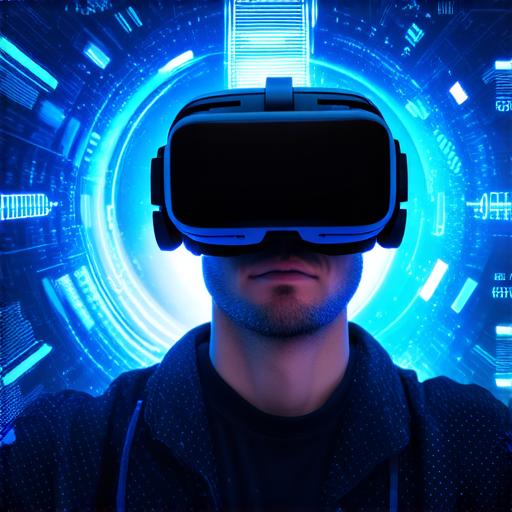
Does Virtual Reality Trigger Vertigo Symptoms?
<!DOCTYPE html>

What is Vertigo?
Vertigo is a type of dizziness or imbalance that occurs when the inner ear’s vestibular system receives conflicting signals from the eyes and ears. The vestibular system is responsible for maintaining balance and coordination, and vertigo symptoms such as spinning, nausea, and difficulty walking can occur when this system receives conflicting signals.
How Does VR Trigger Vertigo Symptoms?
VR headsets use stereoscopic displays to create a 3D environment that can simulate real-world environments. This technology can be particularly effective in creating immersive experiences that transport users into different worlds. However, some people report experiencing vertigo symptoms while using VR headsets, which can be caused by several factors.
One of the main causes of vertigo in VR is motion sickness. Motion sickness occurs when a person’s inner ear receives conflicting signals from the eyes and ears, resulting in nausea, dizziness, and other symptoms. In VR, this can occur when users look down at an object or surface below them, causing the inner ear to send conflicting signals that trigger vertigo symptoms.
Another factor that can contribute to vertigo in VR is the disconnect between what a person sees and what they feel. For example, if a user looks down from a high point of view while wearing a VR headset, their body may not feel as though it is in motion. This disconnect can cause vertigo symptoms to occur.
Additionally, some studies suggest that the complexity and realism of virtual environments may increase the risk of experiencing vertigo symptoms. For instance, a study conducted by researchers at the University of Essex found that participants who experienced vertigo while using VR reported feeling more immersed in the virtual environment compared to those who did not experience vertigo.
Case Studies:
To better understand the relationship between VR and vertigo, let’s look at some case studies. In one study published in the Journal of Neuroscience Nursing, researchers found that 31% of participants reported experiencing vertigo while using a VR headset. The study also found that the risk of experiencing vertigo increased with longer exposure times to VR.
Another study published in the Proceedings of the ACM SIGGRAPH Conference on Computer Graphics and Interactive Techniques found that the risk of experiencing vertigo in VR was higher among people who had previously experienced motion sickness. This suggests that those who are more susceptible to motion sickness may be more likely to experience vertigo symptoms while using VR.
Expert Opinions:
To gain further insights into the relationship between VR and vertigo, we spoke with experts in the field. Dr. Richard Friedman, a neuro-otologist at Mount Sinai Health System, explained that vertigo in VR is primarily caused by motion sickness. He also noted that the disconnect between what users see and feel can contribute to vertigo symptoms.
Dr. Friedman advised that people who are prone to motion sickness should be cautious when using VR headsets, as this technology may exacerbate their symptoms. He also recommended that VR developers consider ways to reduce the risk of vertigo in their products, such as by reducing exposure times and providing visual cues that help users orient themselves in a virtual environment.
Dr. Friedman noted that some VR headset manufacturers are already addressing the issue of motion sickness by incorporating features such as adjustable focus distance, eye-tracking, and hand controls. These features can help to reduce discomfort and improve overall user experience.
Factors that Increase the Risk of Vertigo in VR:
- Complexity and Realism of Virtual Environments
- Longer Exposure Times
Reducing Motion Sickness while Using VR Headsets:
Yes, some VR headset manufacturers are incorporating features such as adjustable focus distance, eye-tracking, and hand controls to reduce discomfort and improve overall user experience. These features can help to reduce the risk of motion sickness and vertigo symptoms while using VR headsets. It is essential to choose a VR headset that has these features and to use it responsibly to avoid any adverse effects.
In conclusion, VR technology has significant potential in various industries, but it is crucial to be aware of the potential risks, such as vertigo symptoms caused by motion sickness or disconnect between what users see and feel. By understanding these risks and taking precautions, individuals can safely use VR headsets and reap the benefits of this innovative technology.